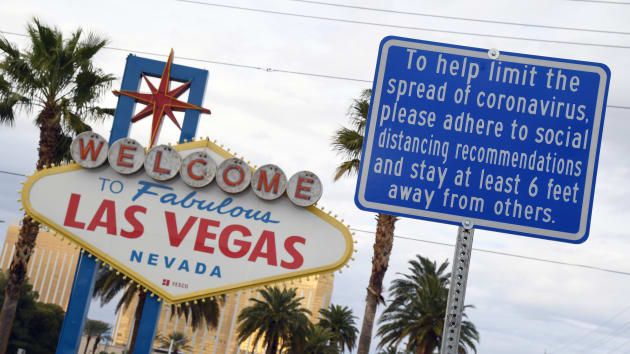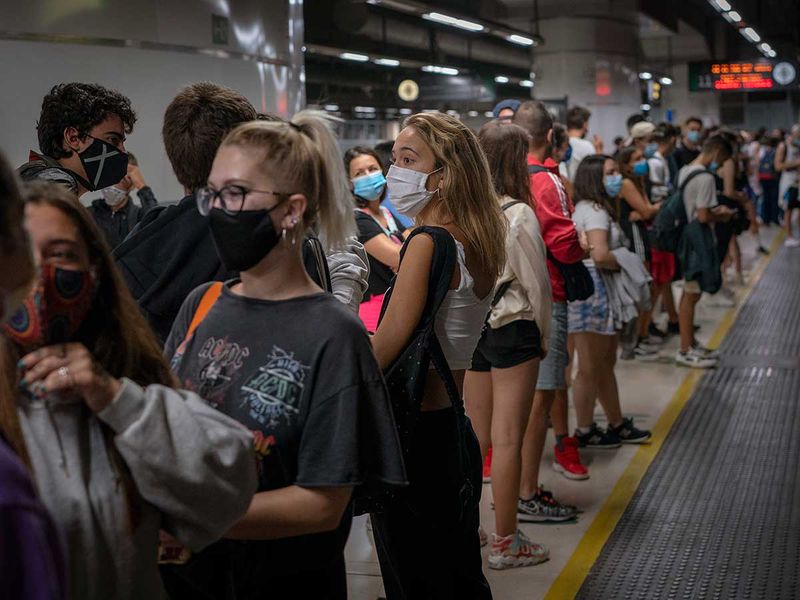
DUBAI: A recent report of reinfection in the US has bolstered the hypothesis that reinfections can happen with COVID-19. Since the pandemic erupted in late 2019, researchers have known much about the new pathogen. But there are still some unknowns about SARS-CoV-2 “reinfection”. It has huge implications for public health, as well as the researchers developing vaccines for the deadly virus.
What does it mean for you and me? Can you get COVID twice?
In a study published in the prestigious The Lancet journal, scientists have confirmed the reinfection case of SARS CoV-2, this time involving a man in the US. It's the first reported case of reinfection in North America. One concern that has stumped researchers: the second hit was more “severe” than the first one.
So can you get COVID twice? “The short answer is ‘yes’,” said Soumya Swaminathan, Chief Scientist of the World Health Organization (WHO). Experts say it's possible to get reinfected. But it's rare. "So 38 million cases worldwide. A couple of dozen cases of reinfection reported so far," Dr. Swaminathan.
Dr. Anthony Fauci, the director of the National Institute of Allergy and Infectious Diseases said lsat week health officials are beginning to see "a number of cases" reported as reinfections. US President Donald Trump, after overcoming a bout with Covid-19, declared he was immune to the virus.
Who was the US person infected twice, and where?
The man was a 25-year-old patient, the first such case in North America.
Where was the reinfected patient? What happened?
The man is a resident of Washoe County in the US state of Nevada. The two SARS-CoV-2 infections in the same patient occurred about six weeks apart. The patient first reported the onset of symptoms on March 25, and tested positive with a PCR test for the virus on April 18, 2020 (24 days). He recovered, having tested negative for the virus on May 26, according to The Lancet report.
Two days later, on May 28, however, the man went to an urgent care center with symptoms including fever, cough and dizziness. On June 5, 2020, he again tested positive for SARS-CoV-2 and ended up in the hospital. "The second infection was symptomatically more severe than the first," the authors of the study write.

Did the patient survive?
Yes. The patient survived his second bout with COVID-19.
How were both infections detected?
Through nasopharyngeal swabs (at each presentation and twice during follow-up). PCR testing (nucleic acid amplification) was done to confirm SARS-CoV-2 infection.
Scientists did next-generation sequencing of SARS-CoV-2 extracted from the swabs. Sequence data were assessed using two different methodologies. A short-tandem “repeat marker” was used for fragment analysis to confirm that samples from both infections came from the same individual, according to The Lancet.
Is it the first confirmed reinfection report globally?
No. It’s the fifth. There had been at least four PCR test-confirmed reinfection cases worldwide.
Where are the previous known reports of secondary infection events with SARS-CoV-2?
- Hong Kong
- The Netherlands
- Belgium and
- Ecuador
How do scientists or establish a reinfection event from the same biological agent (different strains)?
Scientists generally use genetic analyses of the specific pathogens associated with each illness even to tell the difference between primary illness (from infection) followed by a discrete secondary infection or illness with the same biological agent. The US team presented a case report of an individual who had two distinct COVID-19 illnesses from genetically distinct SARS-CoV-2 agents.
First infection:
On April 18, 2020, with the first infection, the patient had symptoms consistent with viral infection:
- Sore throat,
- Cough,
- Headache,
- Nausea, and
- Diarrhoea.
Symptoms had started on March 25, 2020. The patient had no history of clinically significant underlying conditions, and no indications of compromised immunity were identified. During isolation, the patient's symptoms resolved (reported on April 27, 2020) and he continued to feel well until May 28, 2020.
Second infection:
On May 31, 2020, the patient sought care at an urgent care centre with the following:
- Self-reported fever,
- Headache,
- Dizziness,
- Cough,
- Nausea, and
- Diarrhoea.
A chest radiography was done and he was discharged home. 5 days later (on June 5, 2020), the patient presented to a primary care doctor and was found to be hypoxic with shortness of breath. He was instructed to go to the emergency department after provision of oxygen.
What the US case confirm anything?
The Nevada reinfection case demonstrates the importance of social distancing, wearing masks and good hygiene practices — even if you were previously infected with the virus. Moreover, it raises questions about how the human immune system reacts to the virus.
Does prior infection kick up antibodies against a pathogen?
In general, it is thought that SARS-CoV-2 infection results in generation of neutralising antibodies in patients. However, the degree to which this immune response indicates a protective immunity to subsequent infection with SARS-CoV-2 has not yet been clearly understood.
How long does that immunity last?
In previous studies of immunity to other coronaviruses, it’s been shown that loss of immunity can occur within 1–3 years, The Lancet stated.
Why is this study significant?
Immunity from a first hit against a second hit of COVID-19 remains unknown. Scientists can only hypothesize as to the degree of protective immunity conferred by infection with SARS-CoV-2. Reinfection with the virus is a phenomenon that’s currently not very well understood within the medical community.
How were the genetic strains of the SARS-CoV-2 virus differentiated?
Genomic analysis of SARS-CoV-2 showed genetically significant differences between each variant associated with each instance of infection. Researchers stated the second infection was “symptomatically more severe” than the first. Specifically, genetic difference (scientists call them “discordance”) of the two SARS-CoV-2 specimens was “greater than could be accounted for by short-term in vivo evolution”. In other words, the scientists believe the patient was infected by SARS-CoV-2 on two separate occasions by genetically distinct viruses.
Though the study used genomic analysis to show the two genetically distinct viral agents. Due to the fact that the patient's immune reaction in vitro was not assessed, the researchers were unable to draw conclusions about the duration or degree of immunity. The study was funded by Nevada IDEA Network of Biomedical Research, and the National Institute of General Medical Sciences (US National Institutes of Health, NIH).
What do these reinfection cases show?
The researchers stated that previous exposure to SARS-CoV-2 might not guarantee total immunity in all cases.
What should people do after a previous SARS-CoV-2 infection?
Scientists urge all individuals — whether previously diagnosed with COVID-19 or not — to never let their guard down. In short, everyone should take the same precautions (social distancing, wearing masks, frequent handwashing) to avoid infection (and reinfection) with SARS-CoV-2. The implications of reinfections could also be relevant for vaccine development and application in the future, they added.








